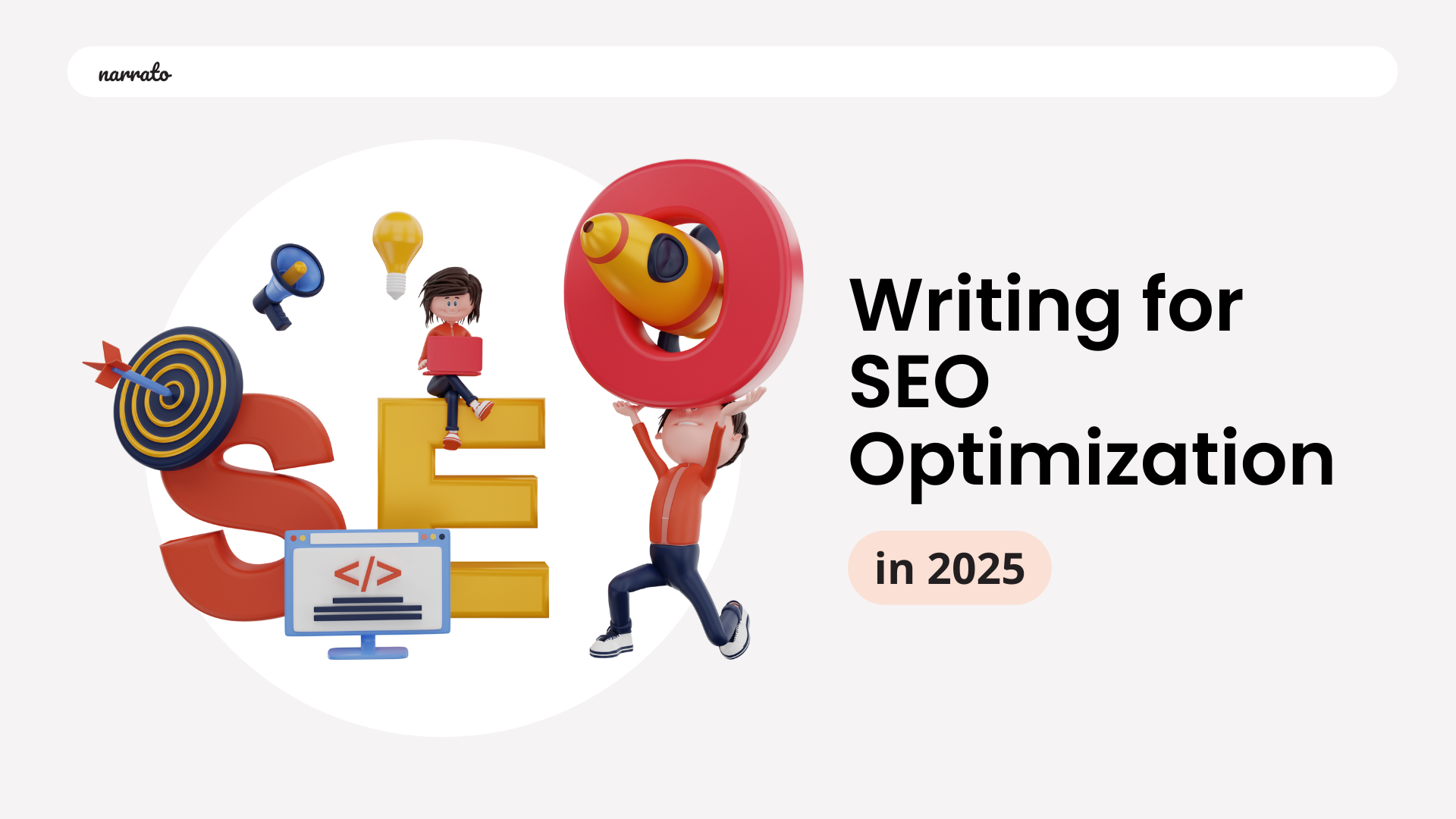The rules of writing for SEO optimization have fundamentally changed in 2025. While marketers once obsessed over keyword density and backlink counts, today’s content creators face a more nuanced challenge: optimizing for both human searchers and AI systems.
Consider this shift. When someone searches “how to reduce customer churn,” they might receive a traditional list of blue links from Google — or a comprehensive answer generated by ChatGPT, Claude, or Gemini. Your content could be the source behind that AI response, driving traffic and authority, or it could remain buried on page three of search results.
This demands a strategic recalibration of your SEO strategy. Modern SEO success still requires the fundamentals, but with the addition is Answer Engine Optimization (AEO). It’s about crafting content that AI systems can easily parse, understand, and cite when responding to queries. And Narrato AI SEO writer can help you with that.
In this guide, we’ll give you some great tips and strategies for writing for SEO optimization with AEO in mind. We’ll also show you how Narrato’s AI tools can help you with that.
Writing for SEO optimization in 2025
Developing a SEO content strategy in 2025
What is the difference between traditional SEO and AEO?
- Focus on intent-focused keyword research
- Create high-quality and authoritative content
- Create short, self-contained content segments
- Structure content around questions and answers
- Focus on voice search and zero-click results
Writing for SEO optimization in 2025
60% of searches now end without a single click. That means users get their answers directly from search snippets, AI chatbots, or voice assistants before they ever reach your site. ChatGPT doesn’t send traffic. Neither does Google’s AI Overview or Gemini. These tools extract value from your content while keeping users within their own ecosystems.
It’s a fundamental shift that’s rewriting the rules of SEO content strategy.
But here’s the opportunity hidden in this challenge: when AI tools do cite sources, they create a new form of digital credibility. Being the source behind an AI-generated answer can establish your brand as the definitive authority in your field—even if users never click through.
This is where Answer Engine Optimization (AEO) becomes your competitive edge. While SEO optimizes for search engine crawlers, AEO optimizes for AI comprehension. Your content needs to be structured so clearly and authoritatively that when ChatGPT or Gemini encounters a question in your domain, they instinctively reach for your material as their primary reference.
The mechanics are different but not mysterious. AI systems favor content that demonstrates clear expertise, provides direct answers, and maintains consistent factual accuracy across multiple pieces. They’re essentially looking for the same signals human readers value, just with algorithmic precision.
What is the difference between traditional SEO and AEO?
Traditionally, Search Engine Optimization (SEO) has focused on improving the visibility of websites in search engine results by using keyword research, high-quality content, backlinks, and on-page optimization. The goal has been to drive clicks and engagement through search engine results pages (SERPs).
However, AEO is designed to optimize content for AI-powered answer engines which provide direct answers to queries rather than merely offering a list of links. This change means users get what they need without necessarily visiting a website, fostering an environment where zero-click results are common.
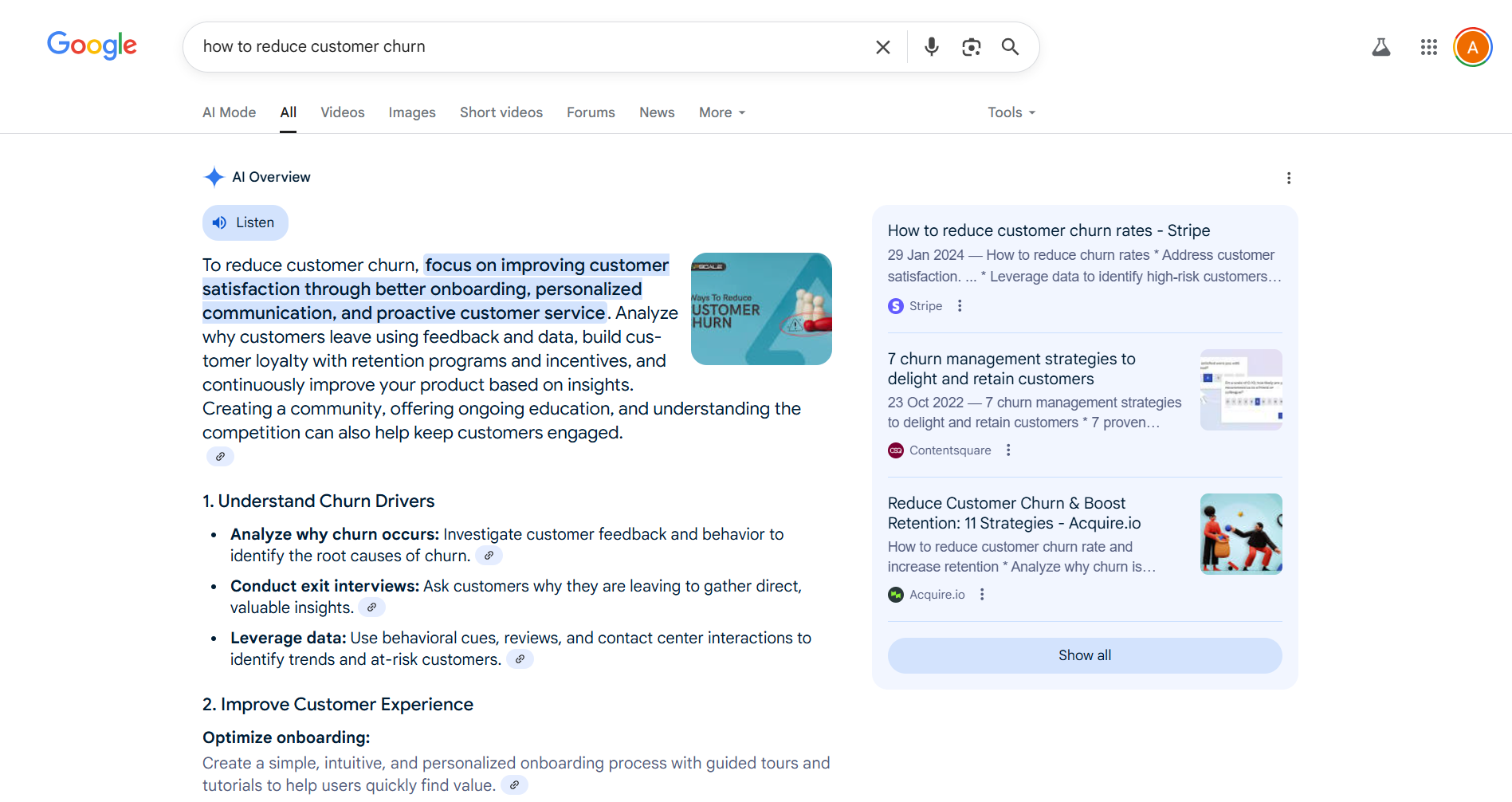

While traditional SEO techniques like building domain authority and technical optimization remain crucial, AEO requires a focus on direct, structured answers that can be easily extracted by AI. This shift necessitates a dual strategy, accommodating both traditional SEO and AEO for comprehensive online visibility.
Developing a SEO content strategy in 2025
Here are some tips for developing an SEO content strategy in 2025 that combines both SEO and AEO best practices:
1. Focus on intent-focused keyword research
The days of targeting “running shoes” because it gets 100,000 monthly searches are over. Especially when your bounce rate tells you those visitors aren’t actually buying anything.
Smart keyword research in 2025 starts with a simple question: what problem is someone trying to solve when they type this into Google? Someone searching “best running shoes for flat feet” isn’t just browsing—they’re dealing with foot pain and need a specific solution. That intent changes everything about how you should approach your content.
This shift becomes even more critical when you consider how AI tools process queries. When Google encounters “Is flat foot bad for running?” it’s not looking for generic shoe recommendations. It wants authoritative content that addresses the underlying health concern before suggesting solutions.
Your keyword strategy should map these problem-solution journeys. Take that flat feet example: your content ecosystem might include “running with flat feet pain,” “flat feet running injuries,” and “orthotic running shoes comparison.” Each piece serves a different stage of the user’s decision process, but together they establish your comprehensive expertise on the topic.
Google’s Keyword Planner can be useful for discovery, but pair it with tools that reveal the questions people actually ask. Narrato AI keyword generator makes it easy to get a list of highly relevant keywords, including long-tail ones, with just a click. It organizes these AI-generated keywords by search volume—high, medium, or low.
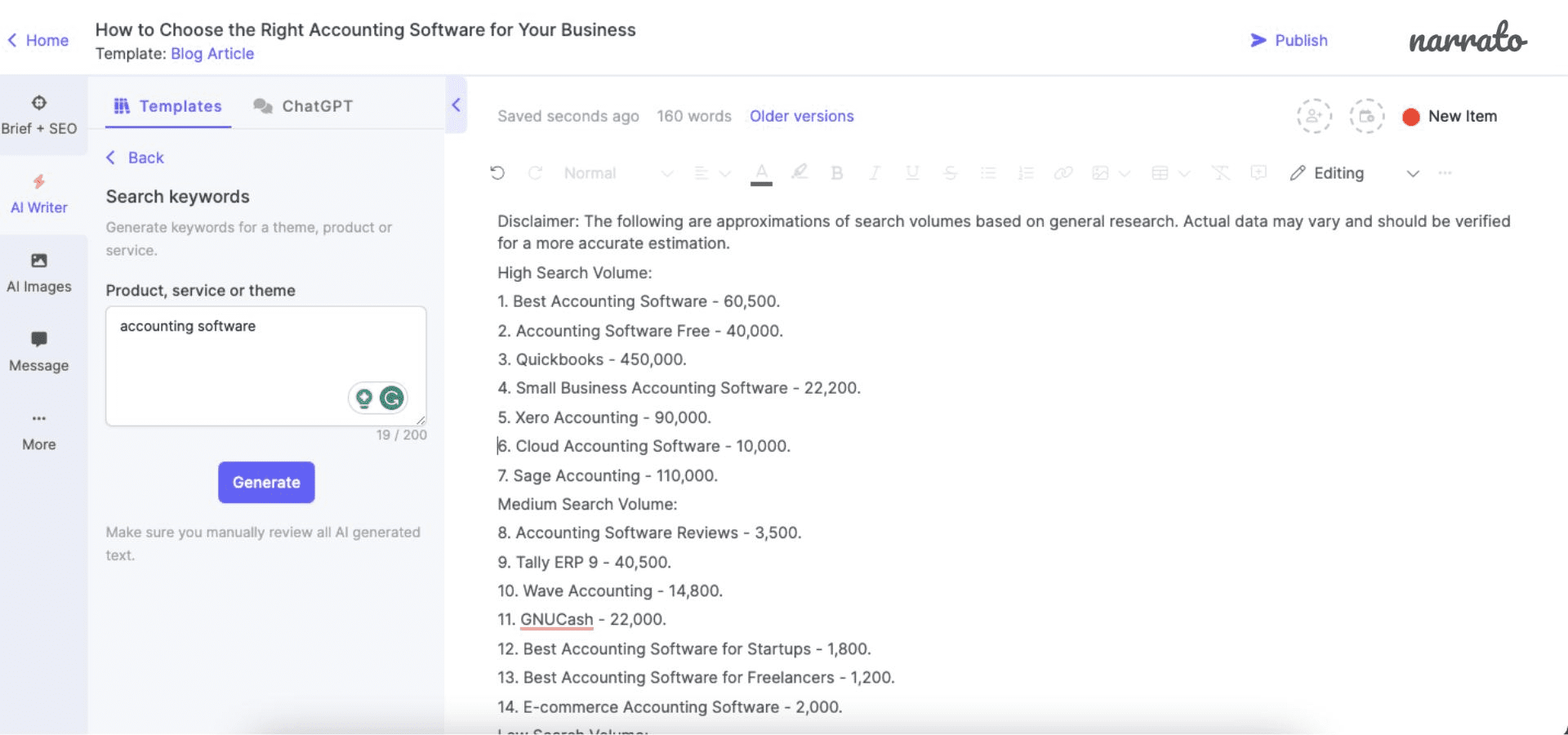

Other tools like Answer The Public, Reddit threads, and even Google itself can uncover the language your audience uses when they’re genuinely struggling with a problem. These conversational queries are gold mines for both traditional SEO and answer engine optimization.
2. Create high-quality and authoritative content
Google’s E-E-A-T framework isn’t just an SEO checklist anymore; it has become the foundation for how AI systems evaluate source credibility.
- Experience means you’ve actually done what you’re writing about.
- Expertise means you have the knowledge to do it well.
- Authoritativeness means others recognize your expertise.
- Trustworthiness means people can rely on what you say.
Here’s what this looks like in practice. If you’re writing a blog to provide useful tips and strategies for small businesses to fuel their growth, instead of generic “10 Tips for Small Business Marketing,” your content becomes “How I Grew My Agency from $0 to $500K Using These 5 Client Acquisition Strategies”—complete with specific metrics, timeline details, and honest assessments of what didn’t work. The difference isn’t just in the title; it’s in demonstrating actual experience with concrete outcomes.
The investment in authoritative content pays compound returns. Every piece becomes a potential reference point for AI-generated answers, extending your reach far beyond traditional organic traffic while establishing your brand as the go-to source in your field.
Narrato offers some great AI tools and templates to help you with this part of writing for SEO optimization. For drafting your SEO blogs, there is an AI blog writer, for product descriptions there is an AI product description generator, and an AI copywriter for creating ad copy, webpage content, event promotion copy, brochure content and more. There are more than 100 such AI templates offered by the AI content assistant on the platform to help you create high-quality and authoritative content.
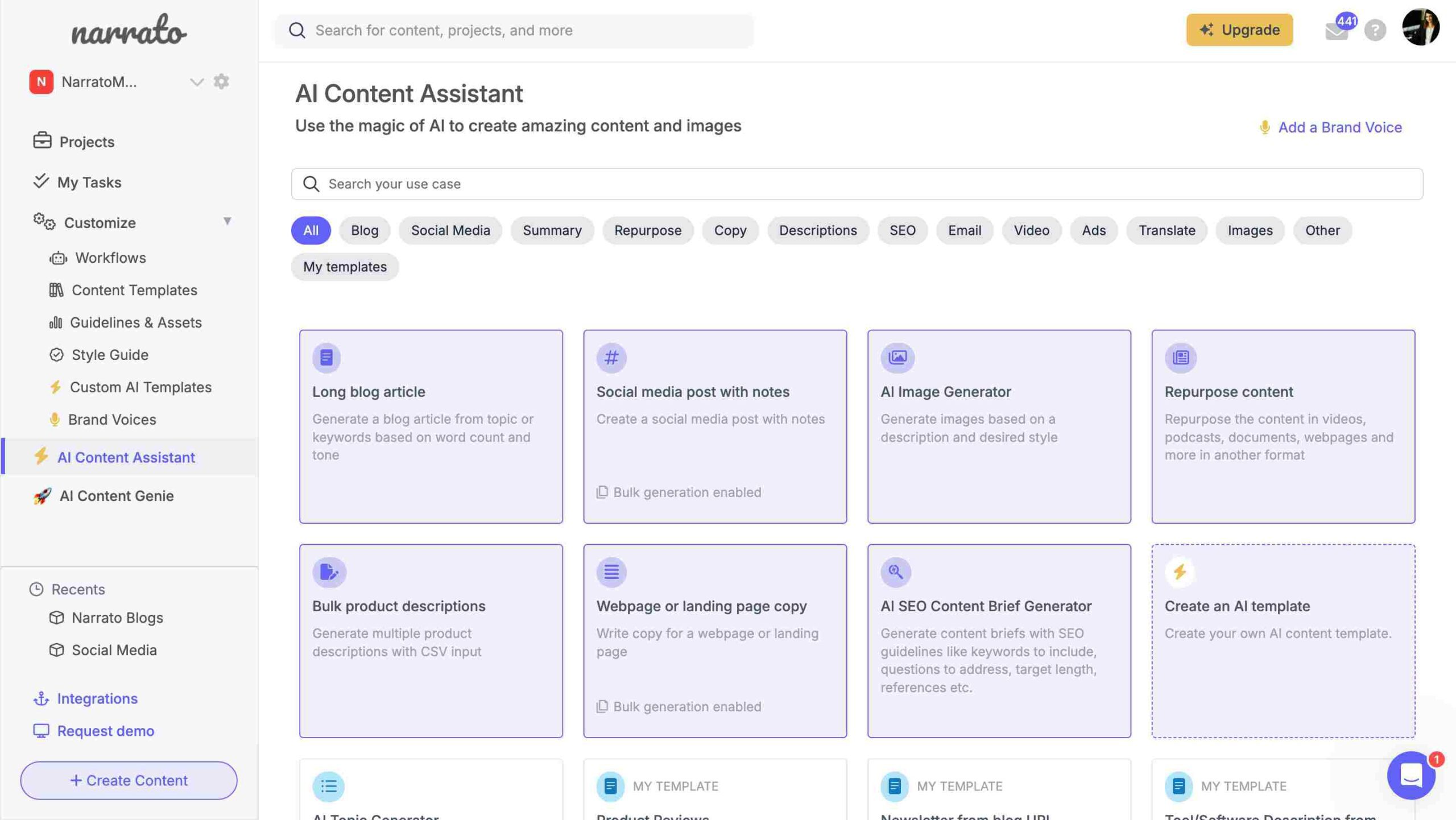

What’s more, Narrato allows you to generate SEO content briefs for your content, so that you can track your SEO score while keeping your content high quality.
Also Read: SEO Writing with AI – How to Use AI SEO Content Generators
3. Create short, self-contained content segments
When you’re writing for SEO optimization, each paragraph should contain enough context to stand alone while supporting your larger argument. AI tools don’t read your entire 3,000-word guide. They extract individual segments that best answer specific queries.
This isn’t about dumbing down your content. Think of it like creating a strategic information architecture. When someone asks AI answer engines about running shoe features, the AI scans for content structured like this:
“The Nike Air Zoom Pegasus 40 features three key technologies: ZoomX foam for energy return, a breathable mesh upper for ventilation, and a carbon fiber plate for propulsion.”
That sentence works perfectly as a standalone answer while fitting seamlessly into a longer product review.
Your content should function like building blocks. Each section answers one specific question completely before moving to the next topic. Use clear topic sentences, follow with supporting details, and end with actionable takeaways. This modular approach serves both the executive scanning your blog post and the AI system extracting quotes for voice search results.
When AI tools can easily excerpt your content, they’re more likely to cite you as their source. Your well-structured paragraph about “best practices for email marketing subject lines” becomes the answer Alexa reads aloud, or the snippet Google’s AI overviews references when users ask for email marketing advice.
4. Structure content around questions and answers
Your customers are already asking questions. The smart move is intercepting those conversations before they happen elsewhere.
Every piece of content should anticipate the next logical question in your reader’s mind. If you’re explaining social media analytics, immediately address “What’s considered a good engagement rate for Instagram?” followed by “How do I improve my engagement rate?” This creates a natural question-answer flow that mirrors how people actually think through problems.
AI systems love this structure because it matches exactly how users interact with chatbots. When someone asks Google “How do I fix a leaky faucet?” they expect a step-by-step response, not a philosophical essay about plumbing. Content that already follows this conversational pattern becomes the obvious source material for AI-generated answers.
Here’s where FAQ sections become strategic weapons. Try to include specific, searchable questions. Narrato’s AI FAQ generator can help you find relevant questions (along with answers) to include in your FAQ section.
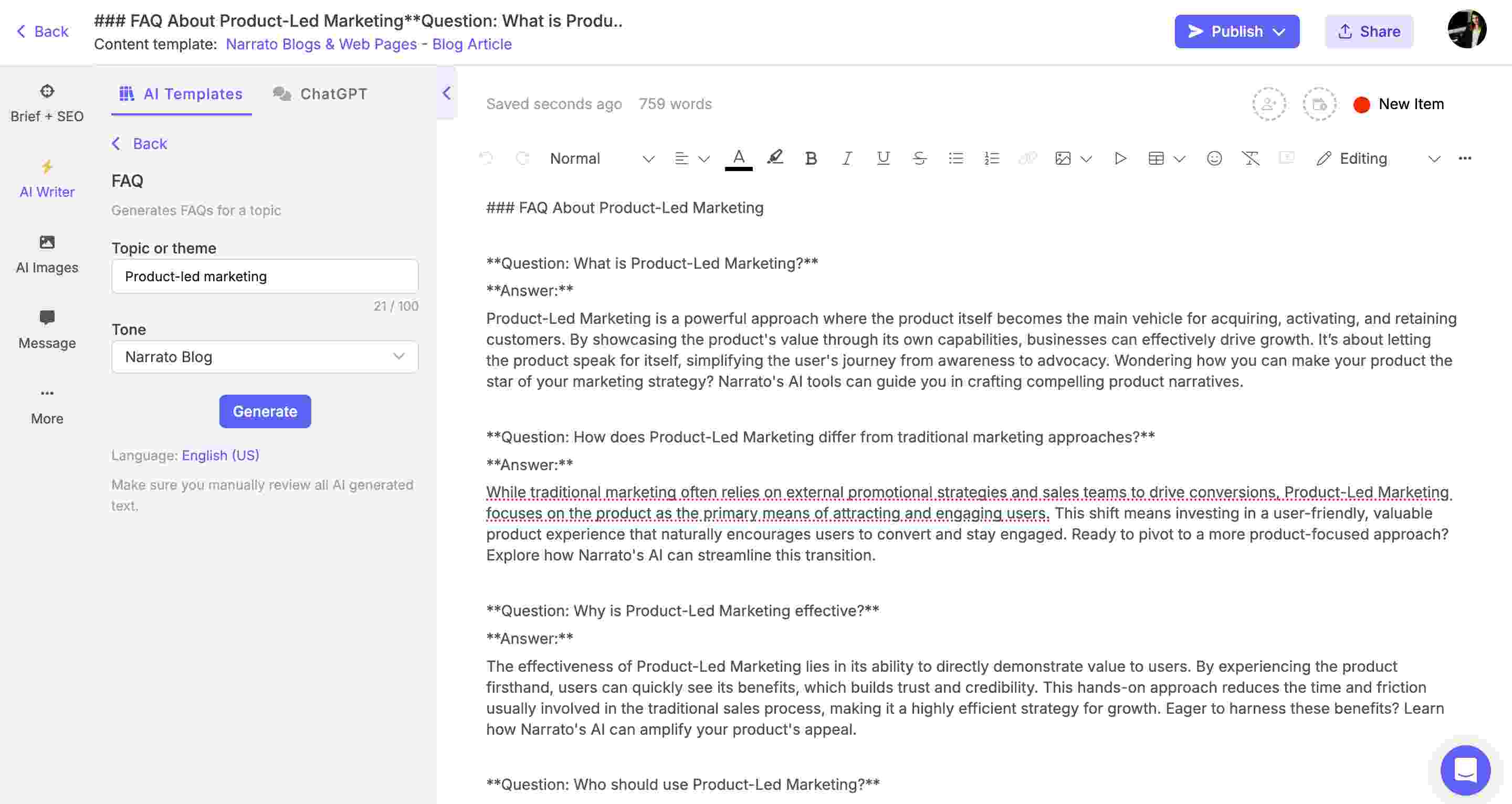

These often become the exact queries people type into search bars or voice assistants. When your content appears as the featured answer box, you’ve essentially hijacked that search query. Voice assistants read your answer verbatim, and AI tools cite your expertise—all because you anticipated the question and structured your response properly.
5. Focus on voice search and zero-click results
Voice search queries are fundamentally different from typed searches. They’re longer, more specific, and conversational. While someone might type “pizza recipe,” they’ll say “How do I make pizza dough without a stand mixer?” Your content needs to match this natural speech pattern by incorporating complete questions and colloquial phrases your audience actually uses.
The paradox of zero-click results is that losing traffic can actually build your brand. When Alexa answers “What temperature should I cook salmon?” by citing your recipe, you’ve just established authority with thousands of users who may never visit your website. They now associate your brand with reliable cooking advice — a form of earned media that’s impossible to buy.
This means rethinking your content success metrics. Traditional page views matter less when your content becomes the authoritative source that AI systems reference. Focus on creating definitive answers that solve problems completely within a single paragraph. When someone asks “How long do car tires last?” your content should provide a specific timeframe, key factors that affect lifespan, and signs it’s time to replace them—all in a format that works equally well for a human reader skimming your article or a voice assistant delivering a spoken response.
The strategic advantage goes beyond search visibility. Brands that consistently provide the answers AI tools cite become the default experts in their field, building trust and recognition without relying on traditional click-through traffic.
Wrapping up
As we look toward 2025, mastering both Search Engine Optimization (SEO) and Answer Engine Optimization (AEO) is essential for boosting your online presence and engagement. With SEO focused on attracting visitors to your website and AEO aimed at securing a spot in AI-generated responses, brands can thrive by adopting these dual strategies. This balanced approach will help your brand maintain its visibility and authority in the dynamic digital landscape.
Try Narrato AI today and start writing for SEO optimization with confidence.



